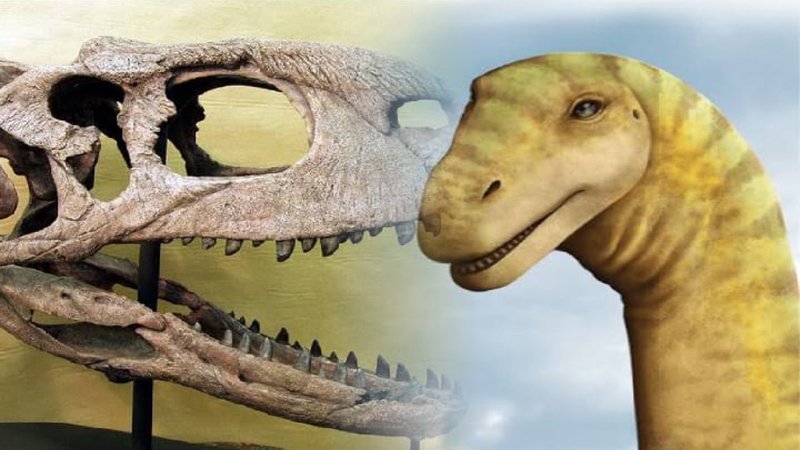The 19.6-inch-long skull was discovered, according to research published April 12 in the journal Royal Society Open Science, and it was from the species D. matildae.

An exciting dinosaur skull found in Queensland, Australia, holds the exciting title of being the country’s first nearly complete sauropod skull.
The 19.6-inch-long skull was discovered, according to research published April 12 in the journal Royal Society Open Science, and it was from the species Diamantinasaurus matildae (D. matildae).
The Sauropoda, which also includes the more well-known Brachiosaurus and Brontosaurus, are dinosaurs with small heads, long necks and tails, and barrel-shaped bodies. Diamantinasaurus belongs to this group.
The Australian Age of Dinosaurs Museum found the dinosaur in 2018 close to Winston in central Queensland.
It was given the name “Ann.” Ann is the fourth specimen of D. matildae to have been found by this museum, making her the third fossil specimen. It belonged to the titanosaur group of sauropods, a group that included the biggest animals to ever live on land in Earth’s history, and it existed in Australia more than 100 million years ago.
The largest members of the middle-sized sauropod D. matildae were close to 131 feet long and weighed more than 170,000 pounds. In addition to being herbivores, sauropods only consumed plants as food.
It is extremely uncommon to find a sauropod skull at all, much less one that is this well preserved, according to the research team. The first nearly complete skull of D. matildae, which is only the fourth specimen ever discovered, is being analysed by researchers to learn more about the animal’s feeding habits, relationships with other sauropod dinosaurs, and physical makeup.
The team claims that Ann is the first specimen of a Diamantinasaurus to have a back foot preserved, as well as the first sauropod dinosaur discovered in Australia with the majority of the skull preserved.
“After examining the fossils, we discovered similarities between the skull of ‘Ann’ and the skull of Sarmientosaurus musacchioi, a titanosaur that existed in South America around the same time as Diamantinasaurus did in Queensland.
According to co-author and Curtin University palaeontologist Stephen Poropat, “these include details of the braincase, the bones forming the back end of the skull near the jaw joint, and in the shape of the teeth (which are conical and curved).
The findings, in Poropat’s opinion, support earlier theories that sauropods travelled through Antarctica between Australia and South America between 100 and 95 million years ago.
“Warmer conditions down there in the south may have been better for them. “Antarctica, which was roughly where it is now, had no ice during the period between 100 and 95 million years ago because it was one of the warmest periods in Earth‘s geologically recent history,” Poropat said.
Australia, which was then much further south than it is now, was also warmer and less seasonal. Given the climate, Antarctica’s forest cover may have made it a desirable habitat or travel route for roving sauropods.
According to the study, Diamantinasaurus was one of the less evolved or “primitive” titanosaurs. Knowing more about this giant dino species could help us understand why they were so successful up until the time of the dinosaurs’ mass extinction.